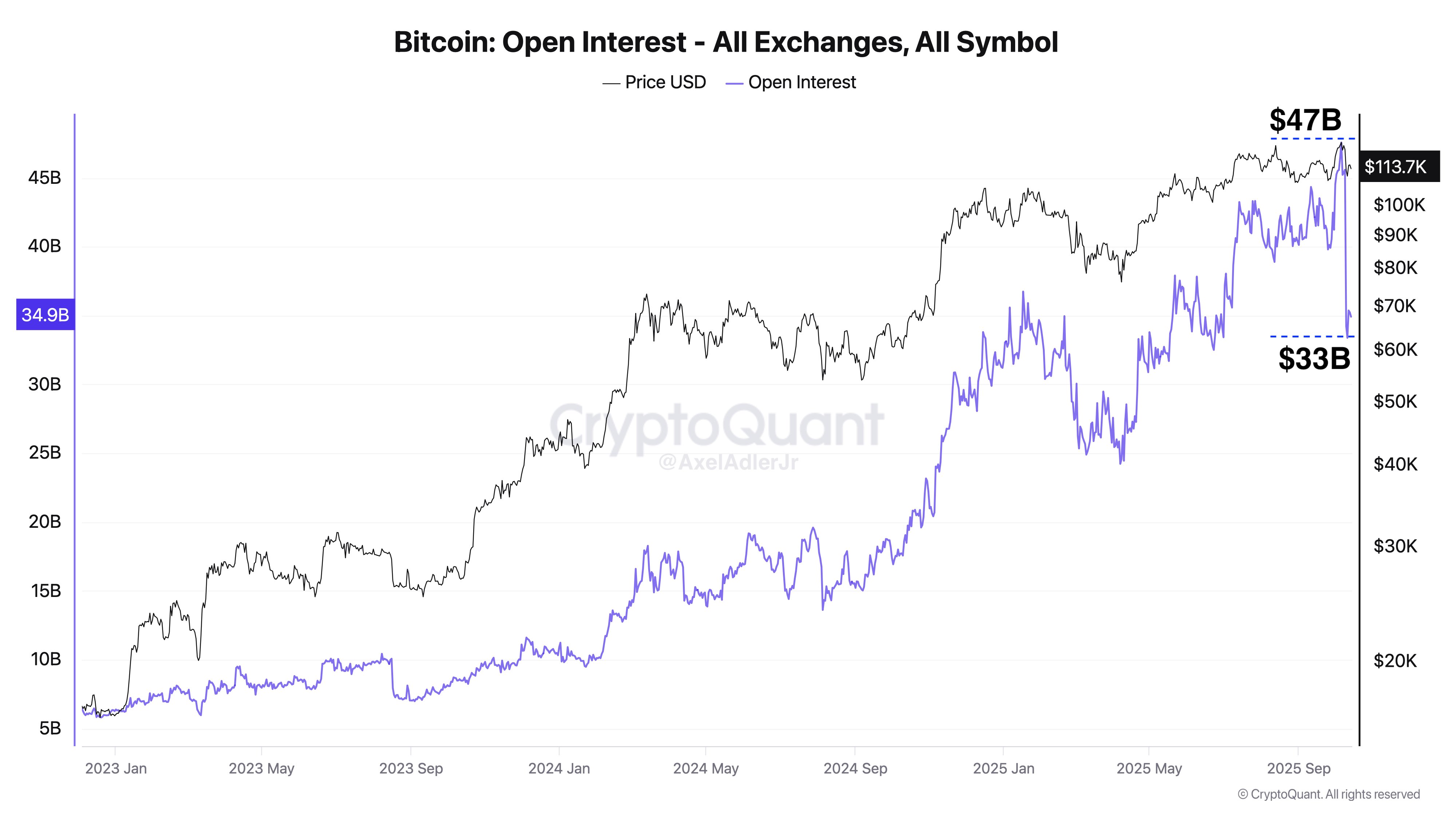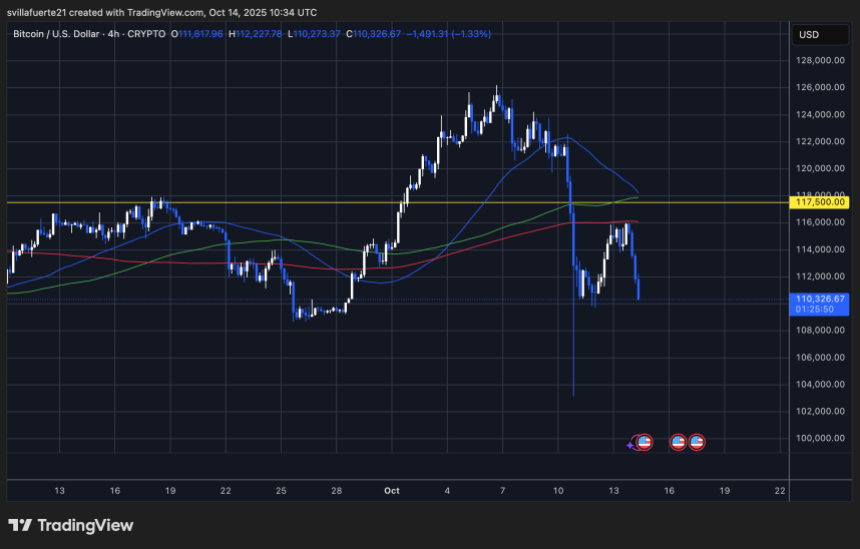Bitcoin is currently testing a crucial support level close to $110,000 after facing rejection from the $116,000 supply zone, which has emerged as a significant battleground for bulls and bears. The market remains precarious following the intense volatility from Friday’s crash, which eliminated billions in leveraged positions and sparked widespread uncertainty.
Related Reading
While the price has stabilized above essential moving averages for the time being, momentum seems to be fading as buyers find it challenging to absorb the ongoing selling pressure. Some analysts caution that if Bitcoin cannot maintain this zone, a more profound correction toward the $105,000–$107,000 range could ensue, representing another shakeout before a potential recovery.
Top analyst Axel Adler has shared new insights that highlight the scale of Friday’s market dynamics. His analysis reveals that spot trading volume surged to $44 billion, nearing cycle highs, while futures volume reached $128 billion. Notably, open interest fell by $14 billion, yet only $1 billion of this stemmed from BTC long liquidations. Adler notes that this was a controlled deleveraging event, not a cascading liquidation — indicating that market participants chose to manage their risk manually rather than being forced out. Nevertheless, volatility remains high as Bitcoin strives to uphold its structural support.
A Controlled Reset Amid Growing Fear
According to Axel Adler, the recent market crash has unveiled a significant yet often overlooked aspect of Bitcoin’s evolution. Data indicates that 93% of the $14 billion drop in open interest (OI) during Friday’s sell-off wasn’t caused by forced actions — meaning it wasn’t due to automatic liquidations. Instead, traders and institutions proactively chose to lower leverage, closing positions to safeguard capital. Adler terms this a “controlled deleveraging”, contrasting sharply with previous cycles where similar crashes often led to chaotic liquidation cascades.

This behavior signifies a pivotal moment in Bitcoin’s market structure. It suggests that participants — particularly institutional players — are managing risk more effectively, creating a more stable and mature trading environment. In previous cycles, sharp liquidations often triggered extreme volatility, exacerbating losses. However, this time, the market has navigated unprecedented stress with relative discipline.
Despite this indication of structural maturity, the emotional landscape has changed significantly. As Bitcoin loses value and stabilizes near the $110,000–$112,000 support zone, fear is permeating the market. Many short-term traders are withdrawing positions, while long-term holders are reassessing their exposure amid rising uncertainty. Adler observes that this phase — marked by peak fear and declining confidence — frequently sets the stage for the next market direction.
If demand rebounds at these levels, Bitcoin could confirm a healthy reset before initiating the next rally. Conversely, a failure to hold the support may test investors’ conviction, potentially driving BTC into a deeper corrective phase before wider accumulation recommences.
Related Reading
Bitcoin Holds Key Support, But Momentum Weakens
Bitcoin is presently trading around $110,300, directly on a pivotal support zone after another wave of selling pressure impacted the market. The 4-hour chart indicates that BTC is struggling to maintain its upward momentum after failing to breach the $116,000–$117,500 resistance range, which previously acted as strong demand during earlier rallies.

The rejection from this area has led to a sharp fallback, bringing BTC below both the 50 EMA (blue line) and the 200 EMA (red line) — indicating a deterioration in short-term structure. The price is now testing horizontal support around $110,000, aligning with the late September consolidation range. A decisive breakdown below this level could expose Bitcoin to additional downside, with the next possible support around $106,000–$107,000.
Related Reading
Despite the negative outlook, oversold signals are beginning to show on lower timeframes, suggesting a temporary rebound could occur if bulls successfully defend this zone. For a sustainable recovery, Bitcoin must reclaim the $114,000 mark and establish itself above the short-term moving averages. Until that happens, the market remains in a delicate balance — with bulls defending critical support and bears retaining control over short-term momentum. The upcoming sessions will be crucial for BTC’s trajectory.
Featured image from ChatGPT, chart from TradingView.com

